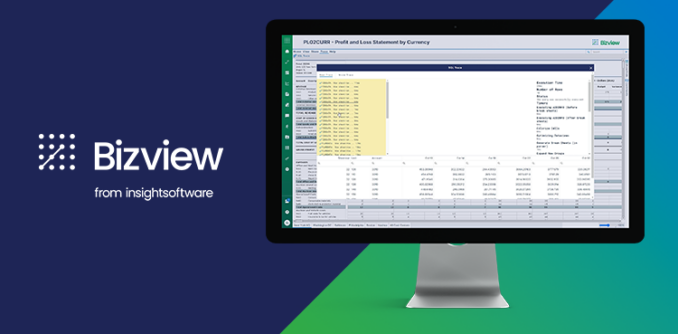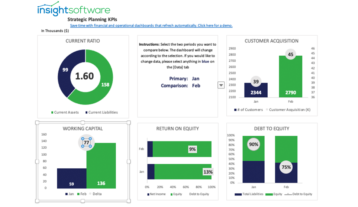Pros and Cons of Zero-Based Budgeting

As economic uncertainty looms, businesses are seeking ways to work smarter, not harder. That means spending money on initiatives that drive efficiency, growth, and business value. It also means trimming back many of the costs that businesses have come to take for granted.
Zero-based budgeting (ZBB) is gaining in popularity, largely because it helps managers to prioritize and justify costs based on the business value those expenses ultimately produce. ZBB dictates that you should assemble budgets from the ground up, with relatively little regard to prior years’ spending patterns. Whereas the traditional budgeting process generally begins with last year’s numbers as a baseline, ZBB starts from zero, as the name suggests. That helps companies to operate more efficiently, grow their profits, and increase agility.
Although ZBB represents a significant change in the way finance teams create budgets, it has some distinct benefits, especially for organizations seeking greater agility and cost efficiencies. This article delves into the benefits of ZBB in detail, along with some of the disadvantages of ZBB when compared to a traditional budgeting process.
How Zero-Based Budgeting Is Different
People frequently view ZBB as being tedious and time-consuming because it calls for scrutinizing virtually every line item in the budget. It stipulates that managers must justify costs and tie expenses directly back to the organization’s strategic priorities. While it’s true that ZBB can be more labor intensive, it can also generate significantly greater budget discipline than traditional methods. That can pay big dividends over the long term. With the right tools that align budgeting around a structured process with effective collaboration, ZBB can be a winning strategy.
With traditional budgeting, managers typically apply a standard percentage uplift across the entire budget, then fine-tune the numbers to align with the business’ priorities. In many respects, that approach is a kind of shortcut; it establishes a default budget in which every expense line starts out at more or less the same level as the prior year. It is easy enough, then, to focus attention on the larger line items that have a greater impact on the bottom line.
The problem with this approach is that it tends to overlook budgetary inertia. In other words, budgeted costs from prior years tend to remain in place, even when they aren’t really delivering strategic value for the company.
Many organizations build traditional budgets using spreadsheets. Although spreadsheets have many virtues, including their flexibility and familiarity, they lack the robust collaboration capabilities, version control, and purpose-built features aimed specifically at the planning and budgeting process. Larger teams that rely on spreadsheets for budgeting often struggle to manage the granular data needed to effectively implement ZBB.
With the right tools, ZBB is an efficient and informative discipline—a methodology that prompts deeper conversations about priorities, efficiency, and innovation.
Now that we’ve looked at the basics of ZBB, let’s explore some of the benefits and drawbacks of this approach:
Benefit 1. ZBB Focuses on Needs
For most people, the obvious upside to using ZBB is that you can eliminate all of an organization’s budgetary “clutter” in one fell swoop. The zero-based approach requires that budget owners justify every expense.
Because ZBB requires managers to scrutinize and evaluate every line in their budget, it leads to resource allocation based on current needs rather than past trends. In that process, it is very common to discover “legacy” expenses that aren’t necessarily creating much value for the company, but which have remained in the budget simply because of organizational inertia.
ZBB is an excellent means of rooting out the wasteful line items that have accumulated over the years. It helps company leaders clean house, aggressively streamlining inflated budgets and bringing costs under control while minimizing any negative impact on operations.
Benefit 2. ZBB Encourages Innovation
ZBB also motivates managers to discover new ways to operate more efficiently, to innovate, and to cut costs in ways that don’t adversely affect their departments or lines of business. Businesses operating with outdated technology often discover that they can do more with less simply by replacing or upgrading their current systems to more modern alternatives. In the process, they can generate significant value in the form of better, more sophisticated functionality and improved insights that enable better business decisions. Automation is gaining momentum as companies facing labor shortages seek better ways of getting the job done.
In many cases, organizations rolling out ZBB will discover that an outside firm can perform internal functions or business processes more effectively and efficiently. Because ZBB forces companies to examine and justify each expense line in their budgets, it compels managers to look for cost efficiencies, and it incentivizes them to do so.
Benefit 3. Increased Communication and Collaboration
ZBB compels people throughout the organization to think differently about budgets. It requires much more introspection than traditional methods. In fact, the most significant downside of ZBB is that it can be somewhat labor-intensive, especially the first time a company builds a zero-based budget. That cloud has a silver lining, though: ZBB tends to foster increased communication and collaboration among department heads or line-of-business leaders.
ZBB often compels managers to engage in broader and deeper conversations with their colleagues. People throughout the organization begin to ask important questions about priorities. ZBB prompts conversations about how the company can do things better, how it can operate more efficiently. Much of the additional “work” required for ZBB is, in fact, a process of deeper level of communication about priorities, efficiency, and innovation.
A Few Disadvantages
There are a few potential downsides to ZBB. For starters, ZBB can feel like a lot of work, especially when you initially roll it out. That can lead to some resistance among stakeholders accustomed to traditional budgeting methods.
ZBB requires active buy-in from leaders throughout the company. With the right tools, though, the process can operate very efficiently and will ultimately result in better, leaner budgets.
Some critics say that ZBB tends to reward short-term thinking by compelling managers to shift their attention (and their budget allocations) to the things that generate immediate revenue, rather than taking the long view.
Another common concern is that ZBB can be problematic for departments in which output is difficult to quantify in monetary terms. Public relations, for example, is a critically important function for many companies. While overall reach and sentiment are easier to measure than they have been in the past, it can still be challenging to put a dollar figure on the value generated by a good PR team.
Finally, some say that ZBB can be easily manipulated by managers who choose to “overpromise and under-deliver.” In other words, they build a budget around promised future benefits, without necessarily delivering on those commitments. The solution to this problem, of course, is to establish clear accountability, holding people to their commitments by measuring and tracking results against those initial targets.
Implementing Zero-Based Budgeting in Your Organization
To gain greater control over costs with ZBB, finance leaders should begin with an intentional approach based on the following key activities:
Begin With Strategic Priorities
Ultimately, ZBB is about scrutinizing each expense line in the budget and asking the questions “Is this necessary?” and “Does this help to advance us toward our strategic goals as an organization?” To do that, the organization must have clarity as to what strategic objectives are and their relative importance. What are the three to five primary objectives for the coming year? It’s important to stick to these priorities. After all, if everything is important, then nothing is important. Staff members who participate in the budgeting process must understand the organization’s strategic priorities and ensure that they evaluate budget items based on their conformance to those priorities.
Categorize Costs
Although ZBB calls for greater scrutiny and cost justification, that doesn’t necessarily mean that managers must spend an equal amount of time on each category of expenses. It can be helpful to begin with the breakdown of cost into discretionary and non-discretionary expenses, for example. Certain line items may be non-negotiable because they fall under existing contractual commitments, or because you simply cannot change them. Taxes and fees relating to compliance, for example, simply cannot be omitted from the budget. Utility costs, likewise, have little flexibility unless the company decides to shut down facilities or invest in energy efficiency.
Some costs may be fixed, others variable, and still others may be stepped costs, which tend to function more like fixed costs, but may increase in significant increments as the business grows. By categorizing these costs in advance, it is easier to determine where staff time and energy should be focused when you ultimately build the detailed budget.
Build Your Budget
The next step is to begin the detailed work of assembling, developing, and refining the budget numbers. This is the hard part. Department heads must identify specific requirements that fit with the company’s strategic priorities, attach cost estimates, and build a business case into which each of those expenses can fit.
Although this is indeed the most difficult part of the process, it can also be the most valuable because it compels managers to explore the detailed factors that drive their expenses. For companies adopting ZBB for the first time, this is also the stage at which they discover the low value of numerous expense items and scrap them in favor of more important priorities.
Create Financial Transparency
ZBB are all about cost accountability. Consider the process that typically happens when you make an internal proposal at your company. You have an idea, and then you build a business case around it. You outline the costs, staffing requirements, expected benefits, and potential risks. You pitch the idea to management, where you hope for its approval.
The unfortunate reality is that in many organizations, there is insufficient follow-up to determine whether or not the business case turned out as expected. Were project sponsors held accountable for the promised results? Were the costs in line with initial expectations? Was there any unexpected impact that had not been considered when you proposed the project?
For stakeholders throughout the organization to answer those questions, they need visibility to information and insights. They need to be able to measure costs and results clearly and effectively, without undue effort. Having the right financial reporting tools in place is absolutely essential as a prerequisite to any successful ZBB effort.
Control and Monitor
This is when financial transparency becomes critically important. Remember that earlier in the process, department heads were called upon to justify their expenses by laying out a clear business case that aligns with the company’s overall strategic objectives. ZBB calls for accountability to the commitments made during the budgeting process. It demands that you apply the same scrutiny you applied during the budgeting process after you finalize the budget.
To be successful with this approach, managers must scrutinize initial estimates closely and be willing to hold people accountable to the estimates they provided during the budgeting process. Over time, this will help the team to judge each business case more accurately, eliminating bias in the process of evaluating which expenses should stay and which should go.
Although ZBB may require more effort than a traditional approach to budgeting, the benefits can outweigh the costs for most companies. To mitigate risks and challenges, many companies choose to take a phased approach to rolling out ZBB, starting with one department or business unit. No matter how you start the process, it’s highly advisable to invest in software that helps managers collaborate around a structured approach and that facilitates broad participation from stakeholders.
With the right tools from insightsoftware, ZBB doesn’t have to mean a lot of work. When you would like to explore the possibility of adopting ZBB in your business, contact us for a free demo.










